In this Article
Toggle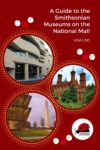
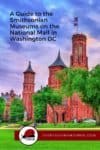
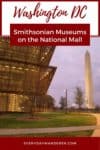

For more than 150 years, the Smithsonian Institution’s collection of world-class museums has attracted millions of visitors from around the world. Here is a complete guide to the Smithsonian museums, galleries, and gardens on the National Mall in Washington, DC.
I always chuckle when folks describe their ideal itinerary for a trip to Washington, DC and say that they want to spend a day visiting the Smithsonian museum. Little do they realize that the Smithsonian Institution is just that, an institution! And it’s way more than a single, world-renowned museum. It’s a collection of museums, galleries, and even a zoo! So how do you start to break down what you want to see at the Smithsonian museums, galleries, or National Zoo when you visit Washington, DC? Fear not! This complete guide to visiting the Smithsonian will help!
Sage Advice: These are the best places to stay in Washington DC based on your travel itinerary.
Museum exhibit designers classify visitors into three types: streakers, strollers, and studiers.
- Streakers are typically at a museum because someone else in their party wants to be. Not them. They may glance at a few pieces, but their hearts are generally not into the experience.
- A stroller is someone with a moderate interest in the topic, region, or other aspects of the exhibit. They are the museum equivalent of someone who picks up a magazine and casually flips through the pages looking at the photos, reading the captions, and skimming the articles until they stop and read a piece fully.
- And a studier will carefully absorb every detail of an exhibit, from reading every word on the signage to carefully examining each piece on display.
Even if you are a streaker, I think you’d be hard-pressed to walk every inch of the National Mall museums in a single day. As a stroller myself, I think you can successfully tackle two Smithsonian museums a day and feel like you did it justice. But if you’re a studier, you’ll likely want one full day per museum.
Sage Advice: Funded by a private trust fund and American taxpayers, there is no admission fee to experience any of the Smithsonian museums, galleries, or the National Zoo. But some museums may only be accessible with a little advanced planning and a timed-entry ticket. For the smoothest experience, check each individual museum website before you visit.
To help offset the costs of running EverydayWanderer.com, you’ll find affiliate links lightly sprinkled throughout the site. If you choose to make a purchase via one of these links, there’s no additional cost to you, but I’ll earn a teeny tiny commission. You can read all of the legal blah blah blah (as my little niece says) on the full disclosure page.
About this Guide to the Smithsonian
This guide to the Smithsonian starts with the Smithsonian Visitor Center and then loosely follows a counter-clockwise fashion around the National Mall. Simply walking from the Smithsonian Castle to the other nine museums listed in this guide is a 2.4-mile undertaking. Add in the distance you’ll walk exploring each museum, and that distance quickly grows longer.
Sage Advice: Explore Washington DC beyond the National Mall museums with this interactive scavenger hunt of DC.
Map of the National Mall Museums
How to Use This Map
- Zoom in or out using the + and – keys in the bottom right corner.
- Click the “More options” text link in the upper left corner to open this embedded map in a new browser window and take advantage of more options including the ability to send these directions to your phone.
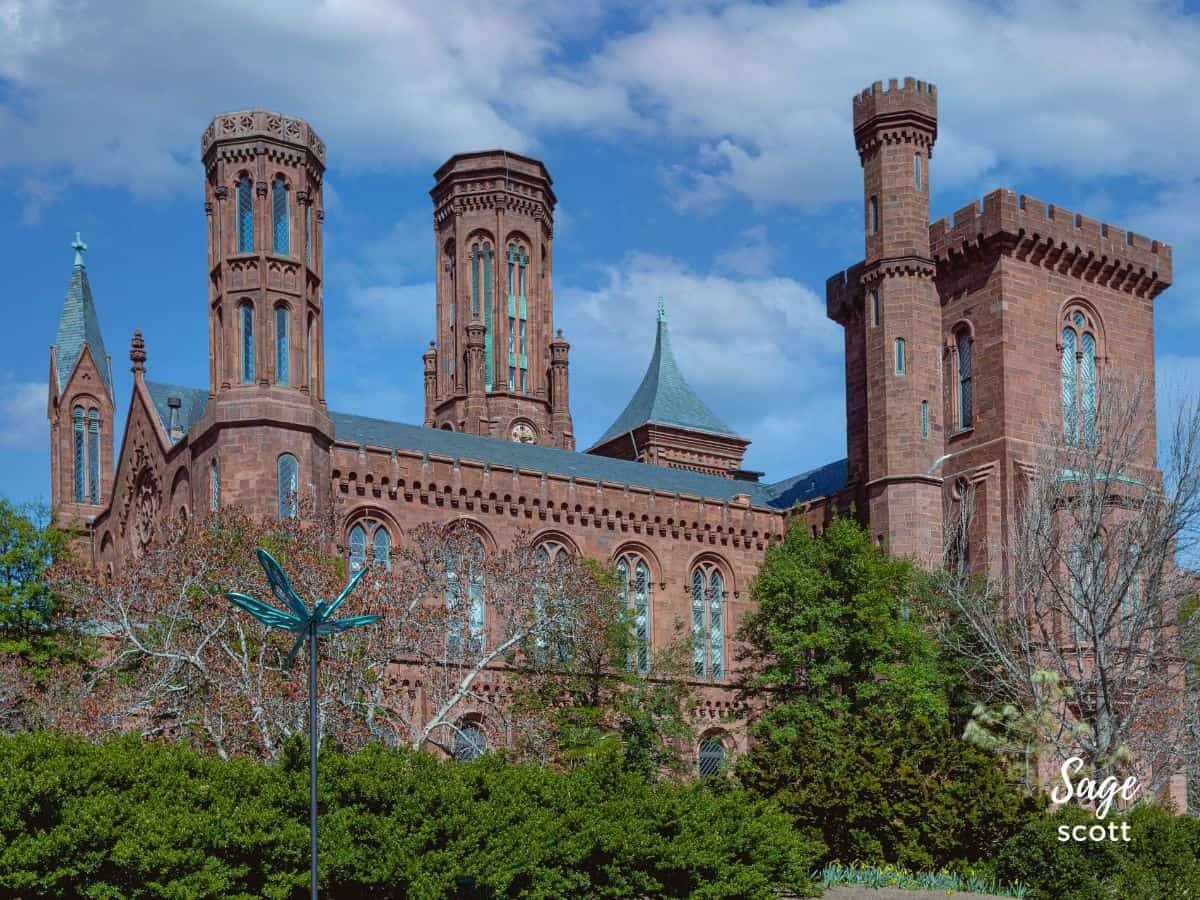
The Smithsonian Institution Building (AKA The Castle)
1000 Jefferson Dr. SW
Hours of Operation: 8:30 am to 5:30 pm daily (except December 25)
Kicking off this complete guide to the Smithsonian museums on the National Mall is the Smithsonian Visitors Center. Designed by architect James Renwick, Jr., the Smithsonian Institution red sandstone building looks like a 12th-century castle in Normandy, France. Thus, its nickname, the Castle.
The Castle is the perfect place to begin your Smithsonian Institution experience because a crypt just outside the north entrance to the Castle contains the tomb of James Smithson. And if it weren’t for James Smithson, there probably wouldn’t be a Smithsonian Institution.
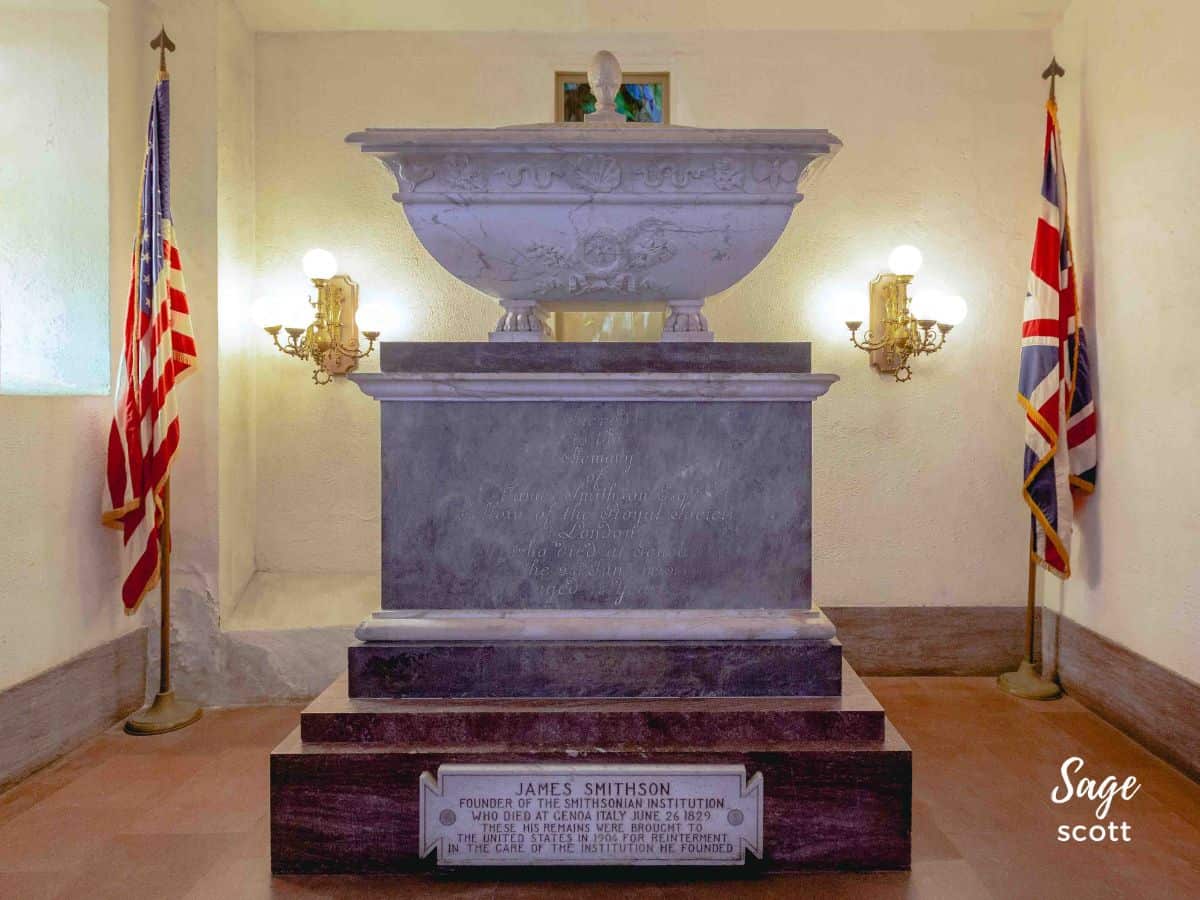
Born out of wedlock in Paris and raised in England, James Smithson was an 18th-century English chemist and mineralogist. Smithson never married nor had children, so his entire estate was left to his nephew. However, if Smithson’s nephew were to die without heirs (which is exactly what happened when he perished in 1835), then Smithson’s worldly possessions were to be used to “found in Washington, under the name of the Smithsonian Institution, an establishment for the increase and diffusion of knowledge among men.”
Fun Fact: Although James Smithson stipulated that the Smithsonian Institution be founded in Washington, DC, the scientist had never actually visited the United States. How lucky for us!
In addition to paying homage to James Smithson, use your time at the Smithsonian Castle to get an overview of the collections at each of the Smithsonian museums and chat with in-house experts to fine tune your Smithsonian experience.
Related Article: Helpful Tips for Visiting the Smithsonian Museums
Freer Gallery of Art and the Arthur M. Sackler Gallery (AKA the National Museum of Asian Art)
1050 Independence Ave, SW
Hours of Operation: 10:00 am to 5:30 pm daily (except December 25)
Heading southwest from the Smithsonian Castle, this guide to the Smithsonian takes you to the Freer and Sackler Galleries of Art. Together, they form the Smithsonian’s National Museum of Asian Art. Thanks to the generous donation of Charles Lang Freer’s collection of Asian and American art, the Freer Gallery was the first art museum in the Smithsonian Institution when it opened to the public in 1923.
If you plan to visit the National Museum of Art’s Freer Gallery or Sackler Gallery, don’t miss the recently restored Peacock Room. Originally a dining room in an English mansion in London, the Peacock Room is now a work of art in Washington, DC. Blending rich blue, green, and gold tones with ceramics from Syria, Iran, Japan, China, and Korea, the Peacock Room continues to prove Freer’s belief that “all works of art go together, whatever their period.”
As additional time and interest permits, explore other collections of American, Egyptian, Islamic, Chinese, Himalayan, Japanese, Korean, Near Eastern, and Southeastern Asian Art at the National Museum of Asian Art.
Enid A. Haupt Garden
950 Independence Ave., SW
Hours of Operation: 7:00 am to 7:00 pm daily (except December 25)
As you travel between the Sackler Gallery and the Smithsonian National Museum of African Art, don’t miss the opportunity to stroll through the four-acre Victorian garden. The garden’s namesake, Enid A. Haupt, provided the $3 million endowment to construct and maintain the garden.
Fun Fact: The Haupt family built its wealth in publishing and included TV Guide and Seventeen in their list of publications.
The Haupt Garden is actually three separate gardens, all located on the rooftops of Smithsonian museums:
- The Parterre. Organized around a parterre, a series of symmetrical flower beds and walking paths, the Parterre reminds me of the gardens surrounding most castles in France.
- Moongate Garden. Inspired by the gardens and architecture of the Temple of Heaven in Beijing, China, the Moongate Garden is a peaceful, Zen-like experience.
- Fountain Garden. And returning to Europe, the Fountain Garden is designed to look like the Court of the Lions at Alhambra, a 13th-century palace in Granada, Spain.
Enjoying This Article?
Sign up for the newsletter!
Thank You for Subscribing!
Museum of African Art
950 Independence Ave., SW
Hours of Operation: 10:00 am to 5:30 pm daily (except December 25)
Started as a privately funded collection in 1964, once it was transferred to the Smithsonian Institution in 1979, the Museum of African Art contained roughly 8,000 sculptures, costumes, books, maps, photographs, and other objects.
Fun Fact: Between the African Art Museum and the Hirshhorn Museum is the second oldest building in the Smithsonian Institution. Although the Arts and Industries Building doesn’t currently house any Smithsonian exhibits, it was designated a National Historic Landmark in 1971 and was the site of an inaugural ball for President James A. Garfield, POTUS #20.
Hirshhorn Museum and Sculpture Garden
Independence Ave and 7th St.
Hours of Operation: Museum – Open daily from 10:00 am to 5:30 pm (except December 25). Plaza – Open daily from 7:30 am to 5:30 pm (except December 25). Sculpture Garden – Open daily from 7:30 am to dusk (except December 25)
Sage Advice: The Hirshhorn Museum offers free, 45-minute tours daily at 12:30 and 3:30.
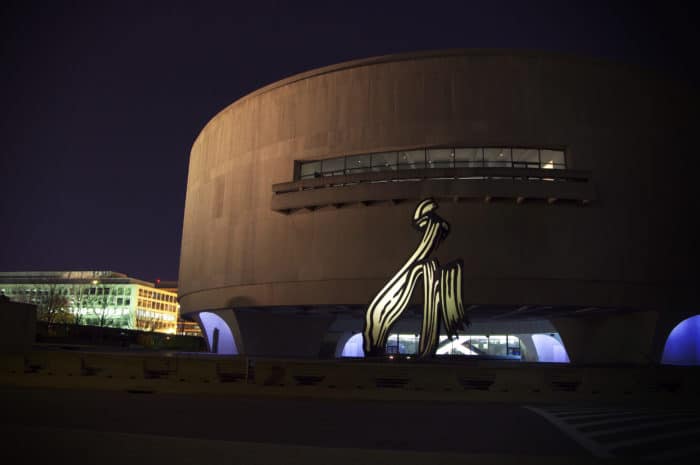
The large, circular building that looks like a car air filter on legs is the Hirshhorn Museum. It sits almost equally between the Washington Monument on the west side of the National Mall and the US Capitol Building on the right and includes a sunken sculpture garden. It is named after Joseph H. Hirshhorn who achieved success by investing in uranium-mining businesses. When he sold his interests in 1955, he earned more than $50 million. With this money, Hirshhorn expanded an already impressive collection of classic French Impressionists to include many other works of art.
Fun Fact: Although most of the funding for the museum that bears his name was via federal funds, Hirshhorn ultimately contributed $1 million toward the building’s construction.
With its large collection of 12,000 works of modern and contemporary art in the forms of paintings, photographs, and sculptures, the Hirshhorn is a great art museum for kids. (Or adults who are less inclined to visit an art museum.)
Related Article: 5 Tips to Help Kids of All Ages Appreciate Art Museums
After you’ve explored the outside of the Hirshhorn Museum, don’t overlook the sculpture garden. Sunk below street level (thanks to those “legs” that hold up the building), the circular inner core of the car air filter-shaped building holds an acre of sculptures in a manicured courtyard with a fountain. Don’t miss Rodin’s The Burghers of Calais or Yoko Ono’s (yes, THAT Yoko Ono) Wish Tree for Washington, DC.
National Air and Space Museum
600 Independence Ave. SW
Hours of Operation: 10:00 am to 5:30 pm daily (except December 25)
Sage Advice: The National Air and Space Museum offers free, 90-minute tours daily at 10:30 am and 1:00 pm.
Kicking off the second half of this guide to the Smithsonian National Mall museums is the National Air and Space Museum. With more than 20 galleries in a 161,000 square foot museum, the National Air and Space Museum is the largest in the Smithsonian Institution’s portfolio. And with more than eight million visitors annually, the National Air and Space Museum is not only the most popular of the Smithsonian museums, it’s actually the most visited museum in the entire United States! Its collection of aircraft, artwork, instruments, uniforms and more is fully dedicated to the history of flight and exploring beyond planet Earth.
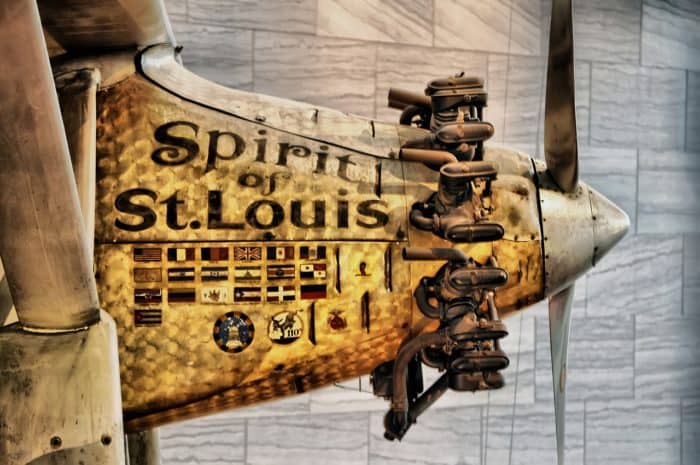
Visit the National Air and Space Museum to see historic objects like:
- America’s first airplane. See the 1903 Wright Flyer flown by Orville and Wilbur Wright in Kitty Hawk, North Carolina back in 1903.
- The Spirit of St. Louis. After successfully crossing the Atlantic Ocean between New York and Paris in 1927, pilot Charles Lindbergh flew his craft from St. Louis to Washington, DC the following spring and presented it to the Smithsonian Institution.
- Apollo 11 command module. This is the trapezoid-shaped unit that the three Apollo 11 astronauts used to return to space after walking on the Earth’s moon.
- Astronaut food. Far from a five-star meal, the Apollo 11 astronauts enjoyed silver packets of dehydrated food.
Sage Advice: Away from the National Mall, the Air and Space Museum at the Udvar-Hazy Center near Dulles Airport in Chantilly, Virginia, houses even more amazing sights. See more about it below.
When you visit, don’t overlook other experiences like:
- Watching a movie in the IMAX theater or attending a show in the planetarium
- Seeing a demonstration or attending a storytime
- Experiencing the thrill of flight in a virtual reality simulator
National Museum of the American Indian
4th St SW & Independence Ave.
Hours of Operation: 10:00 am to 5:30 pm daily (except December 25)
This guide to the Smithsonian now brings you to the southeastern most Smithsonian museum on the National Mall. As you approach the National Museum of the American Indian, you’ll immediately note that the building is quite unique from the others in the Smithsonian Institution.
With a team of Native Americans leading its design, the five-story, curved building looks like natural rock shaped by the elements of wind and water over thousands of years. Every aspect of the museum is intended to reinforce the oneness that the indigenous people have with the planet. Donna E. House, the Navajo and Oneida botanist who supervised the museum’s landscaping explained the approach by saying, “We are the trees, we are the rocks, we are the water. And that had to be part of the museum.”
Sage Advice: If you’re in New York, you can visit a second National Museum of the American Indian. Housed in the Alexander Hamilton US Custom House at One Bowling Green.

A collection of more than 800,000 objects and 125,000 photographs is on display at the National Museum of the American Indian. It represents the history and culture of a wide range of indigenous people from both North and South America. The galleries are organized into areas dedicated to people from the Amazon, Andes, Arctic and Subarctic, California, Mesoamerican and Caribbean, Northwestern Coast, Patagonia, Plains and Plateau, and Woodlands regions.
Native Americans also manage the daily operations of the museum, and they work hard to ensure that visitors will experience something quite different from museums of European and Euro-American culture when they visit. One example of this is the Mitsitam Native Foods Cafe inside the National Museum of the American Indian. Offering a seasonal, Native American-inspired menu, the museum cafeteria is divided into regions like the Northern Woodlands and Great Plains. Visitors can enjoy wild salmon, bison, Indian fry bread tacos, prickly pear mole, and other unique choices.
Fun Fact: More than 20,000 native Americans, from the 48 contiguous states, Alaska, and Hawaii attended the museum’s inauguration in September 2004. It was the largest gathering of indigenous people in Washington, DC to date.
Sage Advice: While not part of the Smithsonian Institution, don’t overlook the National Gallery of Art which includes the East Building, the West Building, and a sculpture garden.
National Museum of Natural History
10th St. & Constitution Ave.
Hours of Operation: 10:00 am to 5:30 pm daily (except December 25)
The National Museum of Natural History is the second-most popular museum in the Smithsonian Institution after the National Air and Space Museum. It houses more than 126 million specimens of animals, plants, minerals, rocks, and other objects.
View this post on InstagramLong line to get into the Natural History Museum, but it will be worth it!
A post shared by TJ and Trey (@t.n.t.adventure) on
When you visit the National Museum of Natural History, you won’t want to miss the following:
- Dinosaurs. From the tyrannosaurus rex skull on the first floor to scientists at work in the FossiLab on the second floor, the National Museum of Natural History will satisfy any budding paleontologist in your travel group.
- Hall of Human Origins. One of the museum’s newer collections, the Hall of Human Origins, opened in 2010 on its 100th anniversary. With a focus on human evolution, this gallery explores the Earth’s earliest humans through the impact today’s people are having on the planet.
- Hall of Mammals. Organized by continent, from the savannas of Africa to the ice shelves of the Arctic, the National Museum of Natural History’s Hall of Mammals has more than 250 preserved specimens.
- National Gem and Mineral Collection. With the Hope Diamond, a 45-karat blue diamond, and more than 15,000 other gems, 350,000 minerals, and 35,000 meteorites, the museum’s collection is one of the largest in the world.
Wrap up your visit to the Museum of Natural History with a stroll through the Butterfly Pavilion. A timed-entry ticket is required for this live butterfly experience, and admission is approximately $7 per person with discounts offered to children and seniors.
Sage Advice: The Butterfly Pavilion is free on Tuesdays, but a timed entry ticket is still required. So plan ahead!
National Museum of American History
- Star-Spangled Banner. On the second floor, you can see the original flag flown at Fort McHenry during the War of 1812. As you might recall from elementary school history, these stars and stripes inspired Francis Scott Key to pen the song that would become our national anthem.
- First Lady Fashion. From bustles to beaded bodices, sewn from silks and satins, experience 200 years of fashion trends in this gallery featuring the ball gowns worn by America’s First Ladies.
- Bon Appétit! Explore the kitchen of Julia Child, the California-born chef who brought French cuisine to the American public.
National Museum of African American History and Culture (NMAAHC)
1400 Constitution Ave, NW
Hours of Operation: 10:00 am to 5:30 pm daily (except December 25)
Wrapping up this guide to the Smithsonian museums on the National Mall is the National Museum of African American History and Culture, also known as the NMAAHC. After nearly 100 years in the making, the NMAAHC opened its doors on September 24, 2016. It remains the only national museum dedicated to the history and culture of African Americans. Over 85,000 square feet and five floors, the museum covers important historical topics like slavery, segregation, and civil rights as well as cultural topics like the arts, community, and religion.
On the National Mall where each Smithsonian Museum’s architectural design appears to be as intentional as the collections inside it, the NMAAHC is no different. I found myself mesmerized by the three tiers of detailed, metal lattice inspired by the iron grilles found in the African American communities in Charleston, South Carolina and New Orleans, Louisiana.
Consistent with all of the other Smithsonian Museums, there is no admission fee. But the free, timed-entry passes are one of the hottest tickets in Washington, DC. The best way to visit the NMAAHC is to plan ahead and score Advance Online tickets, but there are a few other options you can try.
View this post on InstagramA post shared by Smithsonian (@smithsonian) on
If you are lucky enough to land a ticket to the NMAAHC when you visit Washington, DC, you won’t want to miss:
- Rare Photo of Harriet Tubman. Escaped slave turned conductor of the Underground Railroad, Tubman’s contributions to history are significant.
- Louis Armstrong’s Trumpet. With a career that spanned five decades, Louis Armstrong was one of the most influential jazz musicians of the 20th century. See one of his brass trumpets on display at NMAAHC, and when you visit, look for his name engraved in script along the leadpipe.
- Signs of Segregation. From a “colored” drinking fountain to a bus sign from Nashville, Tennessee, signs of segregation that still divided the nation long after the Civil War are on display. Visitors can also see the dress Rosa Parks was sewing the day she refused to give up her bus seat to a white man in Montgomery, Alabama.
- The Champ. See the boxing gloves and headgear worn by one of the world’s most accomplished boxers, Muhammad Ali.
Related Article: Must-See Destinations to Learn About Black History
Sage Advice: While it’s also not part of the Smithsonian Institution, the United States Holocaust Memorial Museum located directly across the National Mall from the National Museum of African History and Culture does an outstanding job of presenting this dark period in world history. If you plan to visit this museum, it’s worth it to pay a $1 per ticket convenience fee to guarantee your timed-entry ticket to the permanent collection.
Frequently Asked Questions About the National Mall Museums
How Many Smithsonian Museums are There?
There are 13 Smithsonian museums, galleries, and gardens located on the National Mall in Washington, DC. There are additional museums outside the National Mall in Washington, DC, (including the National Zoo). And there are two Smithsonian museums in New York City.
Are All Smithsonian Museums Free?
Yes! There is no admission fee at any Smithsonian museum, gallery, garden, or zoo.
What are the Smithsonian's Hours?
Hours of operation for the National Mall museums vary. Please find the operating hours for each Smithsonian Museum listed above.
Have You Visited Any of the Smithsonian Museums on the National Mall?
Which museums, exhibits, or artifacts did you enjoy the most? Is there anything missing from this guide to the Smithsonian museums on the National Mall? If you haven’t been to a Smithsonian Museum yet, what is at the top of your travel bucket list? Share your thoughts in the comments section below.
Looking for more information to plan your Washington DC vacation? Check out my additional recommendations to help you plan your trip to Washington, DC, including what to see and do in Washington DC, the best places to stay in Washington DC, where to eat in Washington DC, and more!
Ready to Go?
Use These Helpful Links to Book Your Trip!
- Find low fares with airfarewatchdog and Skyscanner
- Book your plane ticket with Expedia or Kayak
- Or take the scenic route on an epic road trip in a rental car or an RV from Outdoorsy
- From hotels to private homes, find the perfect accommodation with Hotels.com or Vrbo
- Travel in style with a suitcase, carry-on, backpack, or handbag from eBags
- Save on tickets to attractions, sightseeing tours, and more with CityPASS, Tiqets, and Viator
- Don’t leave home without travel insurance from AXA
- Discover the sights, history, and culture of your destination with an interactive scavenger hunt
- Need something else to plan your perfect trip? Visit my travel resources page for more trusted partners. Happy wandering!
Thank you for sharing!

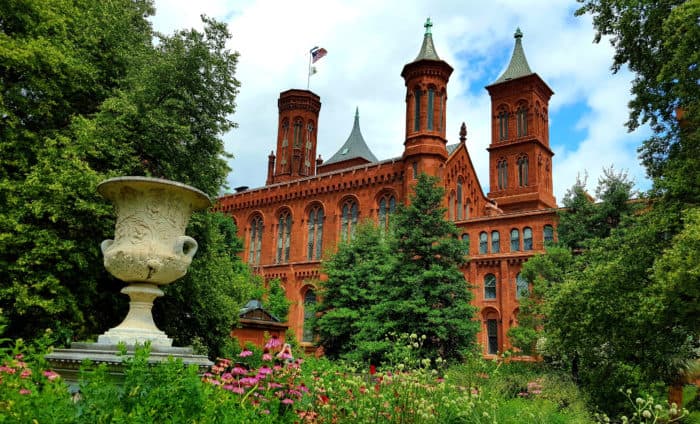

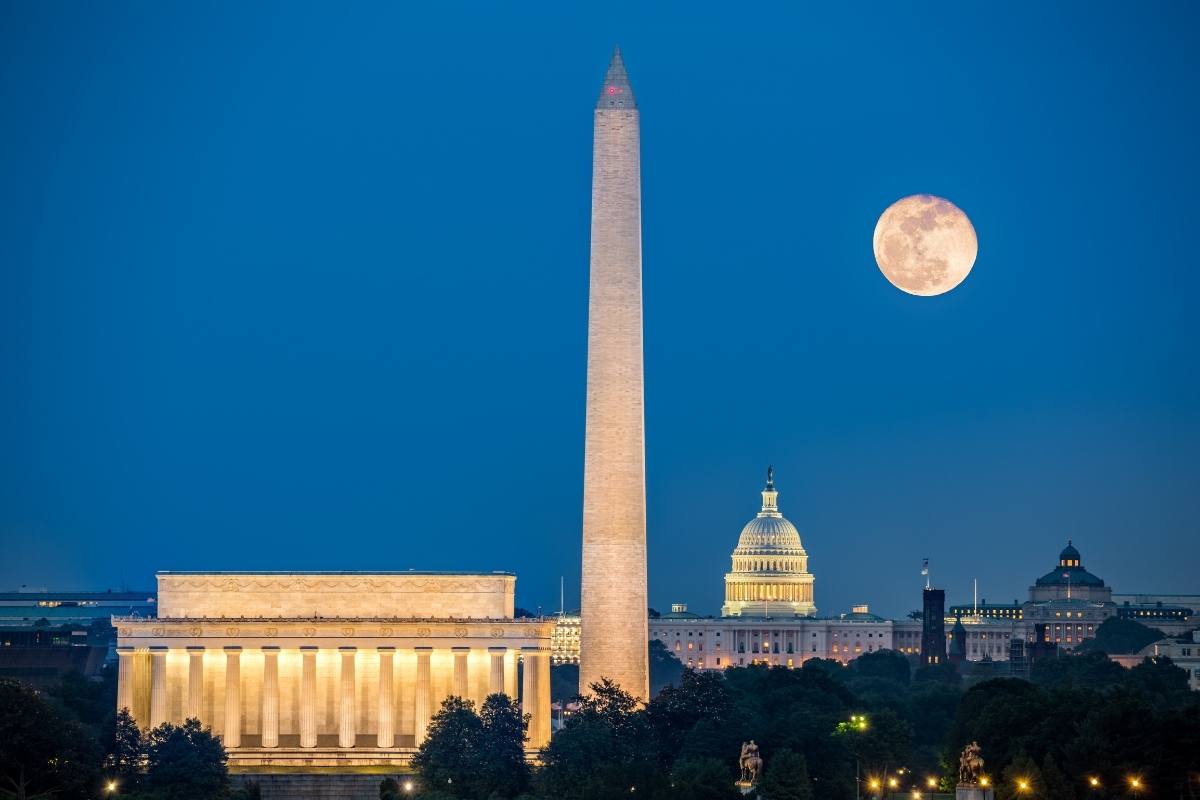

Wow! So many…I did not know. I haven’t visited anyone of them and look forward to doing so. Excellent write-up with complete information for any travellers to plan a trip to the Smithsonian Museum on the mall.
Wow, amazing that these are free! So much to see, do, and learn. Thanks for this comprehensive guide, I especially love your fun facts 🙂
Thanks for sharing a very helpful guide on Smithsonian museums with all pro tips. I went to its Natural Air Space museum and loved all the shows and displays. I would love to see their other museums when I visit Washington DC next time.
That’s an excellent choice. After all, it’s one of the most popular Smithsonian museum with good reason!
I wasn’t aware of Smithsonian museums at all! Now I have learnt from the blog that they are the most widely visible part of the US. They have so many museums and I guess most of them are located in Washington DC, and again most of them in the National Mall. This is surely going to my DC itinerary.
Oh, yes, you can’t go to Washington, DC, and not visit at least ONE Smithsonian museum!
I was so thrilled to read this thorough post as I learned A LOT! I have always heard of the Smithsonian but had no idea what it entailed. I think I would like to start with the National Museum of American History (Dorothy’s slippers and Julia’s kitchen…) and also would find the NMAAHC fascinating and educational. Thank you. Pinned for future use!
Two great choices! There are a lot of nostalgic, “feel good” exhibits at the Museum of American History. And the NMAAHC is a heartbreaking, but necessary, walk through a shameful period of American history. You could spend a week exploring just the museums on the National Mall and still not see them all!
Whoa! That is a long list of museums. And here I was planning a couple of days for museums in the city. But what a great round-up, making choices will be so much simpler with this guide.
I think you could dedicate a full week to just the Smithsonian museums on the National Mall and still not see all of them!
Such a thorough guide of the museums, helpful to anyone who is looking to go there. I especially liked the facts your spread throughout your post. It seems it requires a great deal of time to visit as there is just so much to offer. I think I would enjoy the upcoming Julia Child exhibit. I would love to see her kitchen.
Julia’s kitchen was so incredibly cool. And reading your comment makes me want to watch Julie & Julia again! <3
So cool that Smithsonian museums are a collection of museums, galleries, and zoo. Your comprehensive guide with tips is great. I don’t think anybody can do justice by visiting it for a day! If I ever go there, my top must visits would be the Castle and Zoo!
You could spend a week and still not see everything at the Smithsonian museums in DC! Your top two choices are great ones!
I had little knowlege of the history behind the name Smithson until now. I thought it was very interesting that he had no heirs, neither his nephew, and that he never even lived in the US. I really need to make a week long trip to visit all these amazing museums. I was surprised to see the photo of the long lines at the Museum of Natural History. I’m sure it’s worth the wait tho!
Lucky us here in the US, right?!? Every exhibit I’ve seen at the Smithsonians are amazing. You’ll be impressed!
I really had no idea that the Smithsonian was made up of so many pieces. Your guide is fantastic in laying it all out because it would be so consuming to try and see it all. Me personally, I’d put The Castle at the top of my list.
I think you could spend a week tackling just the Smithsonian museums on the National Mall and still not see it all. The Castle is the perfect place to kick off a visit to the Smithsonian, so good choice! 🙂
I had no idea that Smithson never lived in the US. Definitely lucky for us then! I have been to DC several times and visited a few of the museums that help make up the Smithsonian. By far my favorites (and obviously the two most popular) were the Air and Space Museum and the Natural History Museum. This is a very thorough guide that is quite useful whether it’s your first time or you 20th time! I am saving it for when I go back!
Yes, we Americans are so lucky! Your two favorites are two very good ones. From what I know about your travel interests (I LOVE reading your articles), I recommend the National Museum of American History your next trip to DC. You’ll be able to see the flag flown over Fort McHenry that inspired Francis Scott Key to pen the Star Spangled Banner. There is a really cool exhibit on First Lady Fashion, Julia Child’s kitchen, and so much more.
I wasn’t aware of all these! Great info! I flipped this and re-tweeted it!